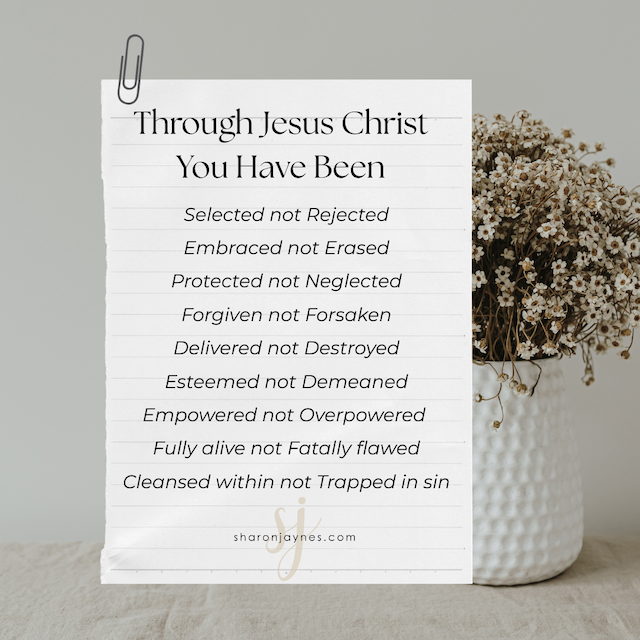Jesus the healer (Matthew 8:14-17)
Open Matthew 8:14-17.
We’ve seen how factions of the church respond differently to the healing stories in the Gospels, and we raised the question of whether the gospel of the kingdom can bring us together. Let’s read this through the kingdom lens:
Matthew 8:14-17 (my translation)
14 Arriving at Peter’s house, Jesus saw Peter’s mother-in-law bed-ridden and burning up. 15 He touched her hand, and the fever left her. She got up and served him.
16 When evening arrived they brought him many who were demonized. He cast out the spirits with a word, and all those who were doing badly he cured. 17 In this way, the message of the prophet Isaiah was fulfilled, “He shouldered our illnesses; he carried off our diseases.”
We moderns have superior medical knowledge, but we can’t write off previous generations. Peter’s mother-in-law had never seen a germ through a microscope, but she knew how it felt to be so sick she couldn’t get up, even with a crowd at the door. She also knew what it felt like to have Jesus touch her hand and feel the fever drain away.
People talk. Capernaum was around 10,000 people in Jesus’ time. By dusk (it’s a Sabbath according to Mark 1), streams of people were bringing sick friends and family to Peter’s house.
They didn’t have the medical diagnoses we’re used to, but they did understand that some sicknesses have a spiritual cause while others don’t. The Jewish people had some quite elaborate rituals and incantations to frighten demons away, but they would have been gobsmacked that Jesus simply commanded them to go. Who is this? What kind of authority does he have in the spiritual realm?
It wasn’t just those who were sick from spiritual causes that Jesus healed. Like Peter’s mother-in-law or the leper back in 8:1-4, Jesus healed a whole range of sicknesses, literally “all who were in a bad way” (8:16). Matthew’s point is that Jesus has authority over the natural realm as well. His edict even brings change at a distance (8:5-13). His authority even calms a storm (8:23-27).
Matthew wants us to recognize who Jesus is. He has authority in the spiritual realm (the heavens) and over the natural realm (the earth). He is our heaven-appointed king, the ruler of heaven and earth. This is the gospel of the kingdom: the good news that God is bringing his earthly realm back into his sovereign care, and he’s doing this through Jesus the anointed king (Messiah).
It’s what God always planned. When God’s representative kingdom was captured by Babylon so they were unable to function as God’s servant to the nations (Isaiah 40–49), God promised to bare his own arm and come to sort it out (Isaiah 50–53). God himself, in his servant, would take upon himself all our misery, all our suffering and malaise, every disorder and grief that oppressed humanity.
When the early Christian community recounted the stories of Peter’s mother-in-law and the others who’d been healed, they felt, “Isn’t this exactly what God said he would to? He promised to come to us and take away all that’s wrong, and here he is! We’ve seen it! He’s doing what he said he would!” They understood their healings as God fulfilling what he promised through Isaiah.
Jesus is the king God has given to the earth to set right everything that’s wrong. That includes oppression that people suffer at the hands of earth powers. It includes oppression from the spiritual realm (the powers behind the powers). It includes sickness and everything that makes people miserable. It includes death.
But God’s use of power is unique. He doesn’t eliminate evil by crushing his enemies. He comes to us in our suffering. “He took up our infirmities and bore our diseases” (8:17). He even took on himself our ultimate enemy, death.
Matthew wants us to ask, “Who is this?” He’s the king who takes on himself the pain and the suffering of his people. The anointed king will restore the earth (and us with it) to be all God created us to be.
What others are saying
R. T. France, The Gospel of Matthew, New International Commentary on the New Testament (Grand Rapids, MI: Eerdmans, 2007), 323:
In Isaiah the Servant’s “lifting” of illnesses and “carrying” of pains speaks in context of his sharing those experiences himself and so removing them (“by his stripes we are healed”).
Craig S. Keener, The Gospel of Matthew: A Socio-Rhetorical Commentary (Grand Rapids, MI: Eerdmans, 2009), 273:
Matthew informs his audience that healing was part of Jesus’ mission, which God provided at great cost to Jesus (8:17). …
The context in Isaiah 53 suggests that the servant’s death would heal the nation from its sin … But the broader context of Isaiah … shows God’s eschatological concern for his people’s complete wellness (29:18; 32:3–4; 35:5–6), suggesting secondary nuances of physical healing in 53:4–5 as well. … Thus Matthew cites Isaiah 53:4 to demonstrate that Jesus’ mission of healing fulfills the character of the mission of the servant, who at the ultimate cost of his own life would reveal God’s concern for a broken humanity.
[previous: Can the kingdom gospel bring us together?]
[next: Introducing the Son of Man]
Seeking to understand Jesus in the terms he chose to describe himself: son of man (his identity), and kingdom of God (his mission). Riverview College Dean
View all posts by Allen Browne





